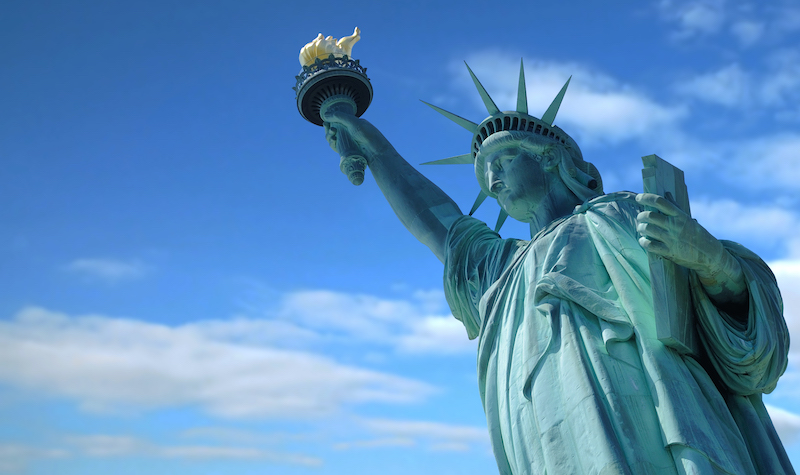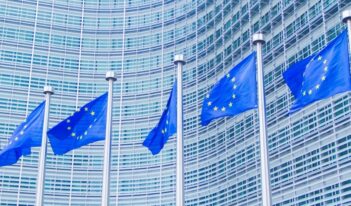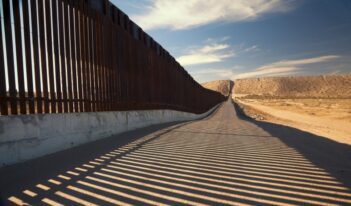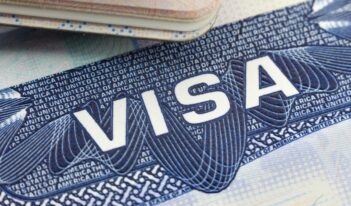
Restrictions on immigration actually end up harming native-born Americans.
During the 2020 presidential election, few issues divided the candidates as starkly as immigration. Anti-immigrant policies were central to President Donald J. Trump’s agenda, and his policies over the last four years have made the United States more closed off to immigration than at any time in its history. By contrast, President-Elect Joe Biden has pledged to reverse nearly all of President Trump’s recent immigration restrictions and to liberalize immigration further beyond that.
Immigration policy is often framed as pitting the interests of would-be immigrants against those of native-born Americans. It is indeed true that immigration restrictions seriously harm potential migrants, many of whom end up being relegated to a lifetime of poverty and oppression based merely on having been born to the wrong parents or in the wrong place. But restrictions also often inflict severe economic harm and injustice on current American citizens. These harms are often given short shrift in public discourse, and they are often excluded from standard estimates of the burden of government regulation on the U.S. economy. But they are real nonetheless.
The successful development of two COVID-19 vaccines (one just approved by regulators in the United States and elsewhere, and one that will likely be approved soon) could put an end to the epidemic that has taken hundreds of thousands of lives in the United States and around the world. Importantly, both vaccines were developed by firms led by immigrants or children of immigrants who moved from poor nations to the United States or Western Europe. Had these individuals been forced to remain in their countries of origin, it is unlikely that they could have led the rapid development of these pathbreaking vaccines.
Although the inventors of these COVID-19 vaccines managed to migrate to nations that offered them the opportunity to develop their talents, many millions of individuals remain barred from doing so due to immigration restrictions. There is no way to know for sure how many extraordinary innovations the United States and the world has lost as a result. But the total cost of these exclusions could be enormous.
Few immigrants are likely to make contributions on the scale of the COVID-19 vaccines. But the exclusion of large numbers of migrants inevitably means barring some who could make extraordinary advances. And the loss of even those few is a huge cost.
Moreover, even “ordinary” immigrants collectively make enormous economic contributions. In the United States and elsewhere, immigrants and their children are disproportionately represented among doctors and scientists, thereby making major contributions to advances in science and health care. Immigrants also make disproportionate contributions to U.S. innovation more generally, increasing economic growth and greatly enriching native-born Americans and immigrants alike.
In the early to mid-20th century, the United States became a world leader in technology in large part by attracting talent from all over the world. Among the Americans who have won Nobel prizes, immigrants have won some 35 percent of these awards in science and almost 30 percent in economics—more than double the highest immigrant proportion of the general population reached at any time since the Nobel Prizes began in 1901.
In the United States, immigrants are almost two times more likely than native-born Americans to become entrepreneurs and found new businesses. Although many new businesses fail, those that succeed benefit the economy as a whole, helping to promote competition and innovation.
Immigrants who are not scientists, Nobel Prize winners, or outstanding entrepreneurs still make major contributions to economic growth. On average, immigrants from poor and dysfunctional nations increase their productivity several-fold upon moving to wealthier and freer societies. This enhanced productivity provides a boon to receiving nations’ economies, and to the world as a whole. Economists estimate that eliminating legal barriers to migration throughout the world would roughly double world GDP, creating vast new wealth. Wealthier societies have more innovation, better health care, and more capability to address a variety of problems—including pandemics and pollution.
Some benefits of the vast new wealth created by immigrants will go to the immigrants themselves. But much also goes to native-born citizens who benefit from immigrants’ innovations, work for businesses that immigrants establish, and consume the products that immigrants develop and produce.
Perhaps we should let in migrants who seem likely to become valuable workers but keep out most others. This reasoning, however, assumes that government can do a good job allocating labor and predicting which people will make useful contributions. That assumption is unlikely to be true. If it were sound, the Soviet Union would have been a great economic success.
Many of the greatest immigrant scientists and entrepreneurs came from humble origins and would have been excluded under current proposals for so-called “merit-based” immigration. The world is full of people with modest initial credentials who could achieve great things in a society that offers them a meaningful opportunity to do so. By excluding them, we shoot ourselves in the foot.
Economic harm is far from the only cost of migration restrictions to American citizens. The law enforcement apparatus established to keep out and deport undocumented migrants unavoidably threatens the civil liberties of all Americans.
Because of weak due process protections in the immigration enforcement system, the federal government detains and sometimes deports thousands of U.S. citizens every year after mistaking them for undocumented immigrants. Federal policy also permits the use of racial and ethnic profiling to enforce migration restrictions in so-called border areas, which actually encompass territory where some two-thirds of Americans live. This enforcement in border regions inevitably exposes large numbers of Americans to racial and ethnic discrimination simply because they are or appear to be members of the same ethnic groups as many undocumented immigrants.
Other American victims of immigrant restrictions include the thousands of U.S. citizens separated from their parents or minor children by President Trump’s travel bans, which have barred nearly all entry into the United States by citizens of several Muslim-majority nations.
Even Americans without close personal or economic relationships with would-be immigrants suffer from the loss of the opportunity to form them. The person who could have been the love of your life may be barred from entering the United States because of immigration restrictions. The same goes for the teacher or professor who might have expanded your horizons, or the entrepreneur who could have helped you start a successful business.
Advocates of migration restrictions argue that many immigrants must be barred because they inflict harm on native-born Americans, such as burdening the welfare state, increasing crime and terrorism, spreading deleterious cultural values, and undermining the nation’s political institutions by voting for harmful policies. The coronavirus pandemic has also highlighted fears that migrants might spread communicable diseases.
Such concerns cannot be lightly dismissed. But before using them to justify restricting immigration, we should take three considerations into account.
First, is the harm in question real? Many of the standard objections to expanding migration rights are greatly overblown. For example, immigrants have lower crime rates than those born in the United States and do not increase welfare spending per capita. Available evidence also shows that immigrants assimilate at least at the same rate as in the past and have political views that do not diverge greatly from those of native-born citizens.
Second, where migration creates genuine problems, it is often possible to deal with the issue using keyhole solutions that minimize the risk without barring migrants. For example, if it turns out that immigrants unduly increase welfare burdens, the best approach is to limit their eligibility for various welfare benefits—as already occurs under the Welfare Reform Act of 1996. If immigrant voters are somehow a threat, authorities can again build on existing measures, such as the requirement that before being allowed to vote immigrants must pass a civics test—one that, incidentally, most native-born Americans would fail.
Finally, where keyhole solutions are inadequate, policymakers should consider tapping the vast wealth created by expanded migration to mitigate negative side effects that cannot be addressed in other ways. For example, if—contrary to most social science research—it turns out that immigration lowers the wages of American workers, then policymakers can tap some of the wealth generated by immigration to increase wage subsidies, such as the earned income tax credit, to whichever groups are adversely affected.
In my recent book, Free to Move: Foot Voting, Migration, and Political Freedom, I apply these three considerations to a wide range of potential negative side effects of immigration. I do not claim that this approach can completely solve all problems that might be caused by migration. But it does undercut numerous standard rationales for immigration restrictions.
Even if some negative side effects of immigration cannot be eliminated or mitigated, they must be weighed against the enormous benefits. Immigration is not a zero-sum game between migrants and natives. To the contrary, freedom of movement is usually a great boon to both. And immigration restrictions threaten the liberty and happiness of both migrants and American citizens alike.
Portions of this essay are adapted from the author’s book, Free to Move: Foot Voting, Migration, and Political Freedom.




